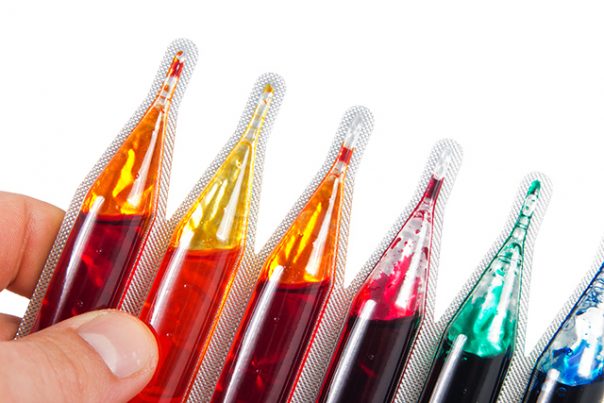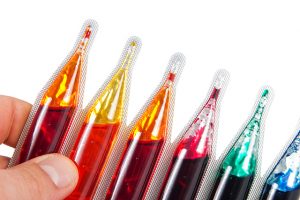
Orange 1 — toxicity, side effects, diseases and environmental impacts
Thursday, November 16, 2017 by Janine Acero
http://www.naturalpedia.com/orange-1-toxicity-side-effects-diseases-and-environmental-impacts.html

Orange Dye No. 1 is a dye used as food coloring primarily in candies, cookies, cakes, carbonated drinks and processed meat such as hot dogs in the first half of the 20th century. It is known by other names – FD&C (food, drugs and cosmetics) Orange No. 1, Acid Orange 20, and Orange 1. It is one of seven dyes first approved for use in 1906 when the U.S. began regulating food safety. All seven of these dyes were found to be coal-tar dyes.
Its molecular formula is C16H11N2NaO4S.

List of known side effects
Orange No. 1 has been found to cause tumors based on animal studies with rat models, but no such report was available in human toxicity studies. It is therefore not classifiable as to its carcinogenic potential in humans.
According to PrecisionNutrition.com, however, Orange No. 1 is already a banned food dye alongside Orange 2, Violet 1, Red 2 and Red 32 because of carcinogenicity.
Furthermore, Orange No. 1 was delisted from use by the Food, Drug and Cosmetic Act 1938 after incidents of diarrhea in children occurred due to overuse of the food dye (alongside other dyes) in candies and popcorn – as noted in the CRC Handbook of Food Additives, Second Edition, Volume 1.
Body systems affected by Orange 1
Several volunteers were administered single doses of 80 mg Orange No. 1, which caused diarrhea in four to eight hours. In animal studies using rats, doses of up to 10,000 mg/kg of diet caused diarrhea, spleen enlargement, anemia, growth depression and even death.
Occupational exposure to Orange No. 1 may occur through the inhalation of its dust particles, and dermal contact within the workplace where the dye is made or used. A survey by the National Institute for Occupational Safety and Health (NIOSH) in 1981-1983 statistically estimated that almost 900 workers were potentially exposed to Orange No. 1 in the U.S.
Items that can contain Orange 1
Orange No. 1 was used as a food coloring agent in various candies, cookies, cakes, carbonated drinks and processed meats. It was banned in the U.S. after the worst case of Halloween candy poisoning in 1950 due to use of orange food coloring in the treats, as documented in the Handbook of U.S. Colorants: Foods, Drugs, Cosmetics, and Medical Devices. Children across the country fell ill with severe diarrhea and welting rashes after eating candy and popcorn balls tinted by Orange No. 1.
How to avoid Orange 1
Orange No. 1 has already been banned for use in the U.S. However, certain precautions still apply when eating foods with artificial coloring such as candies, carbonated drinks and processed meats. Reduced consumption of these food items may help prevent negative effects such as stomach upset and allergic reactions.
Where to learn more
Summary
Orange Dye No. 1 is a food color primarily used in processed foods, candies and carbonated drinks, to name a few. It is one of seven dyes first approved for use in the U.S. that turned out to be coal-tar dyes.
Orange Dye No. 1 is known by other names: FD&C Orange No. 1, Acid Orange 20, and Orange 1.
Orange Dye No. 1 has been banned in the U.S. since the “Halloween candy” incident in 1950, when children had severe bouts of diarrhea and rashes after eating candies that were tinted with Orange No. 1.
Exposure to Orange Dye No. 1 may occur in the workplace through inhalation of its dust particles, or contact with the skin where the dye is produced and used.
Sources include:
Tagged Under: Tags: Orange 1





